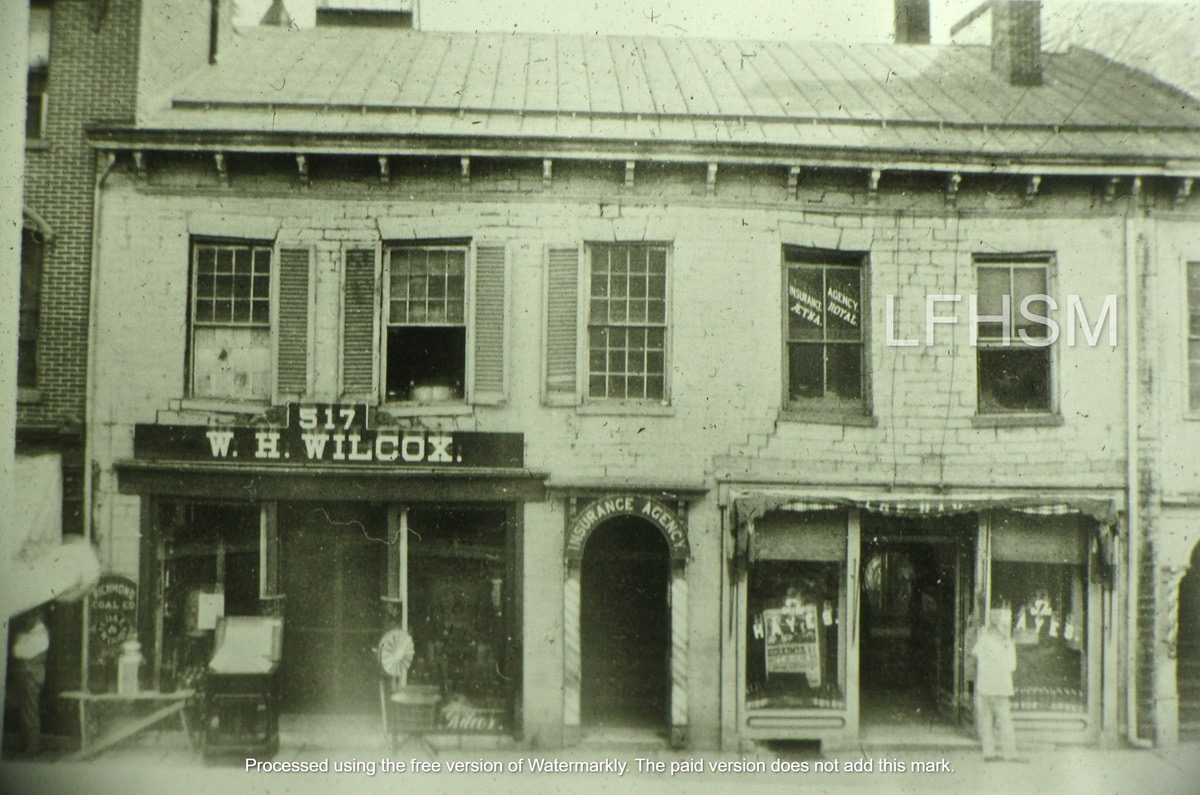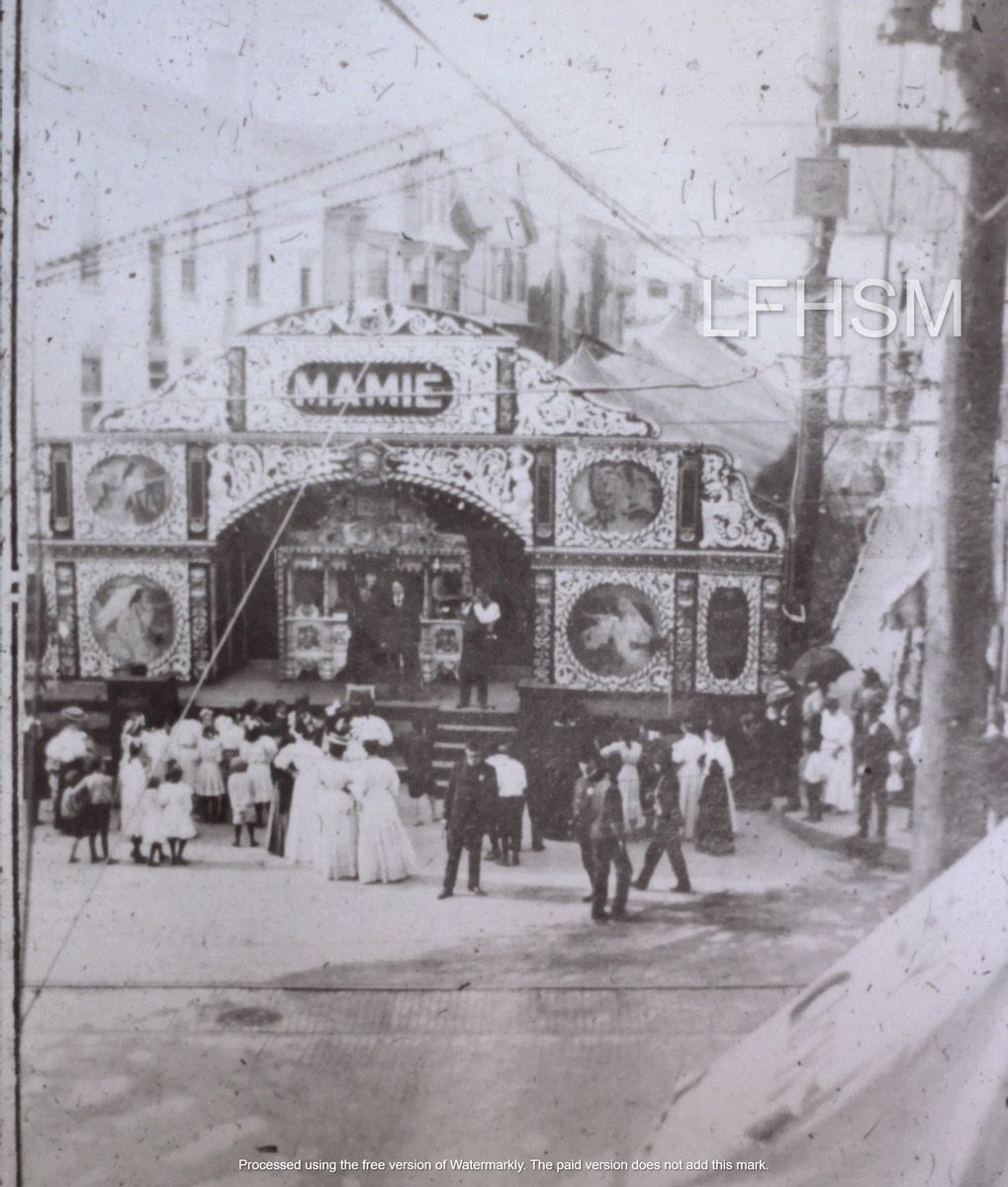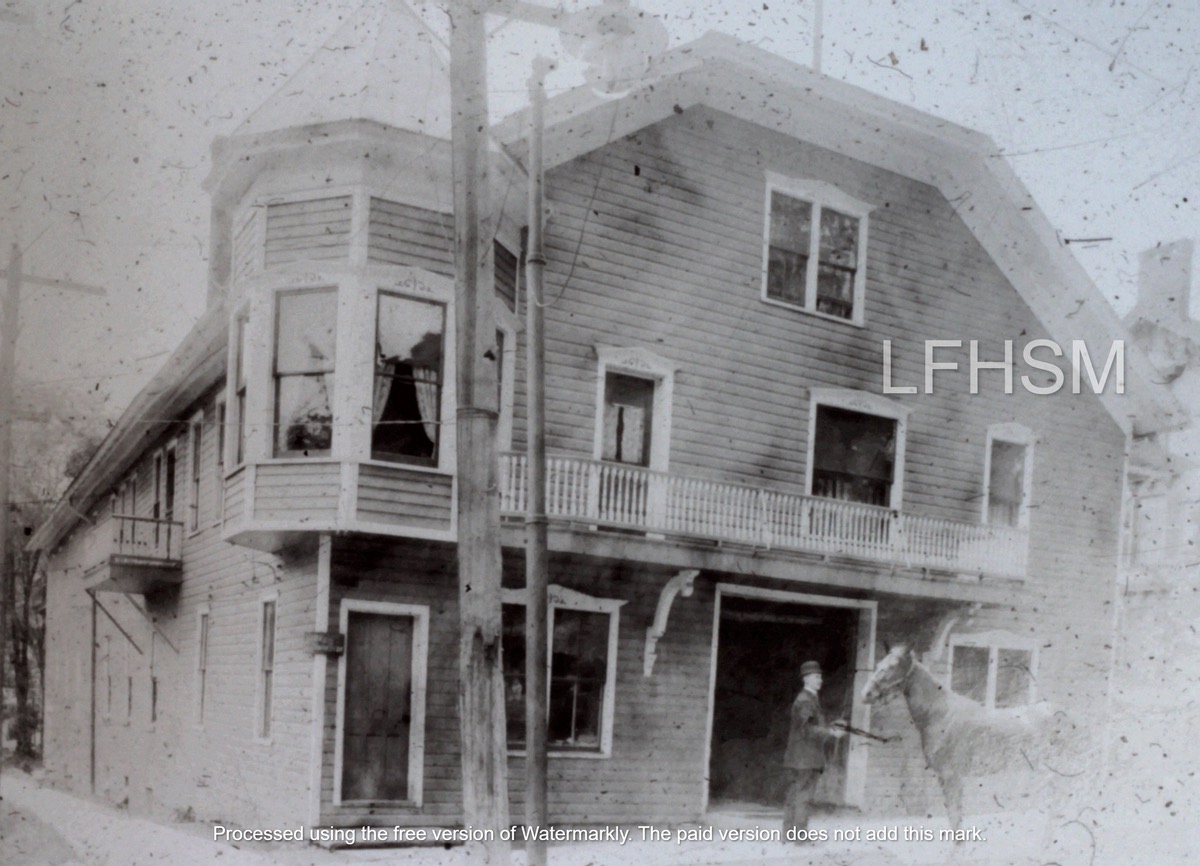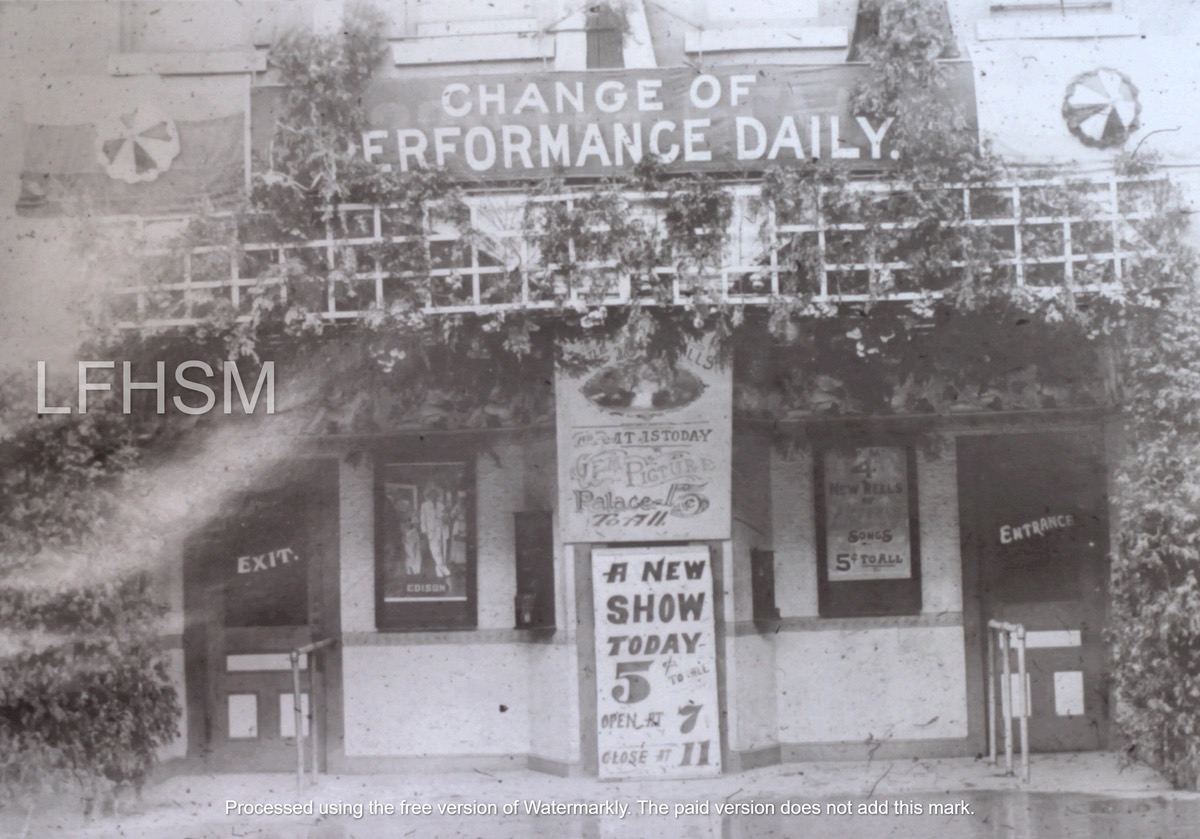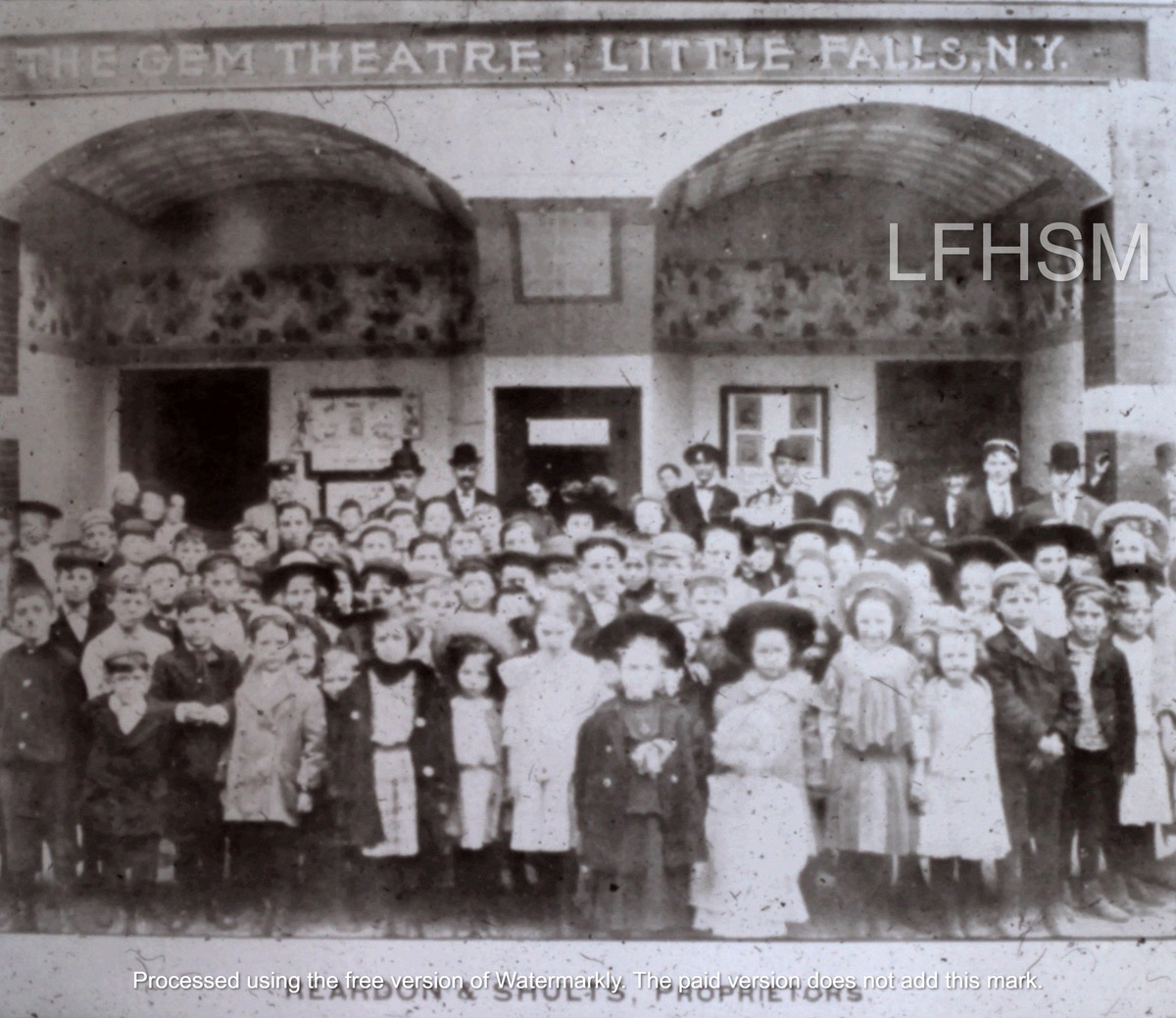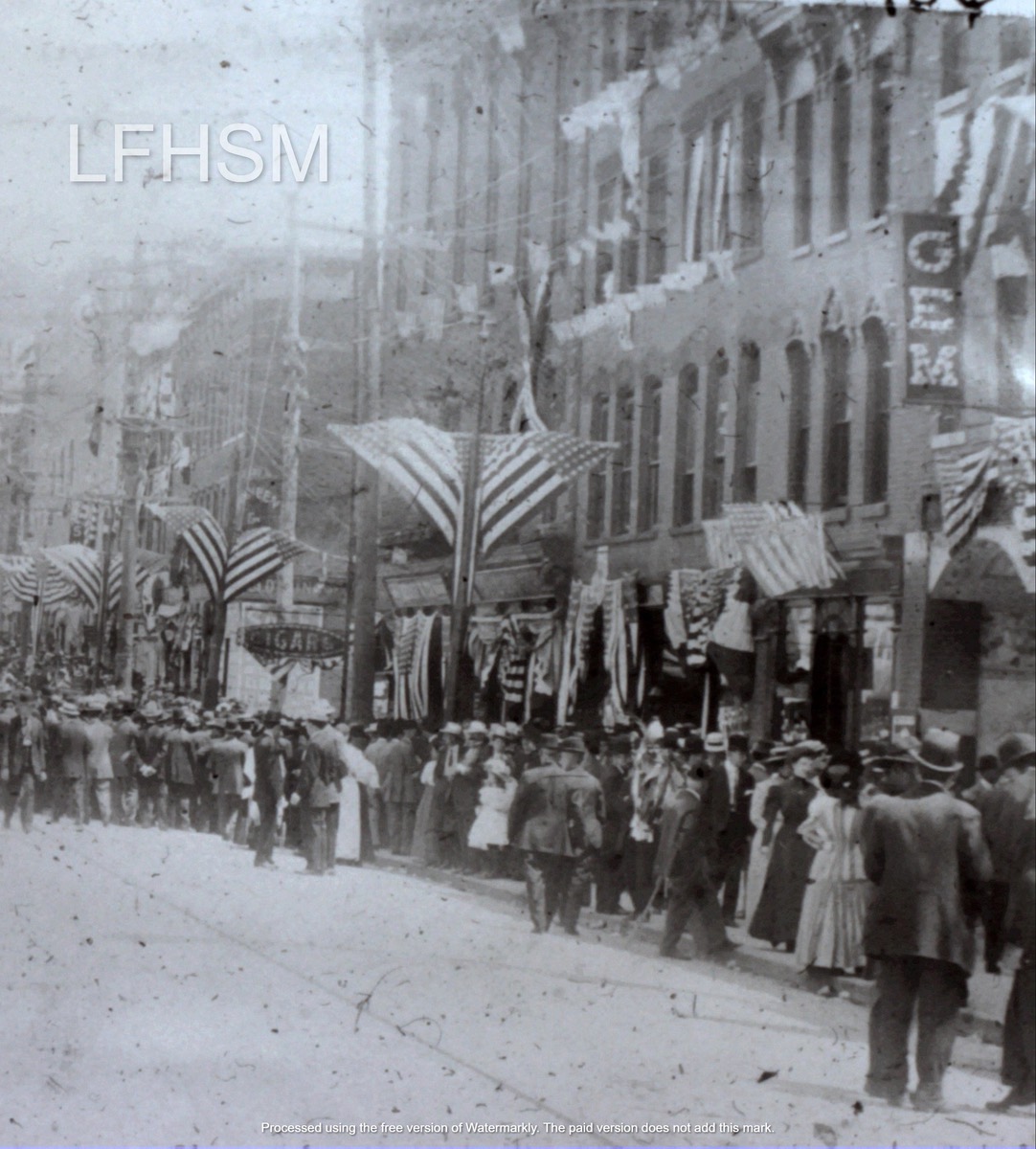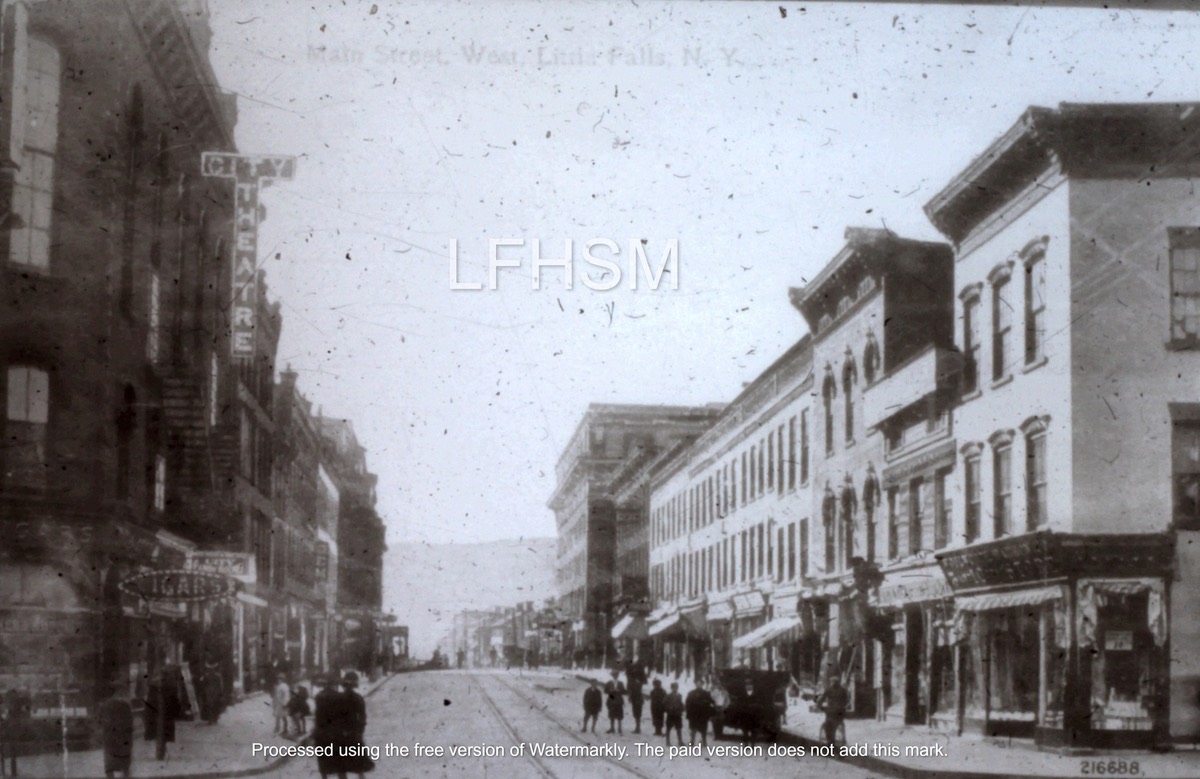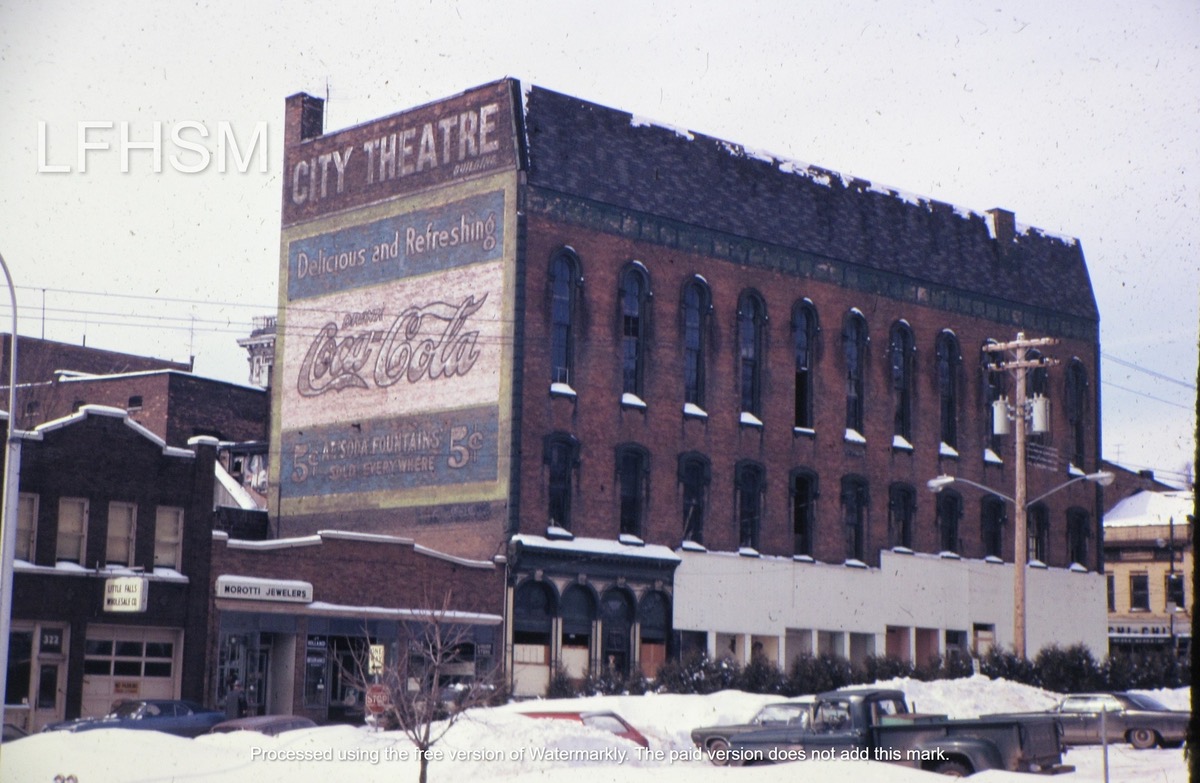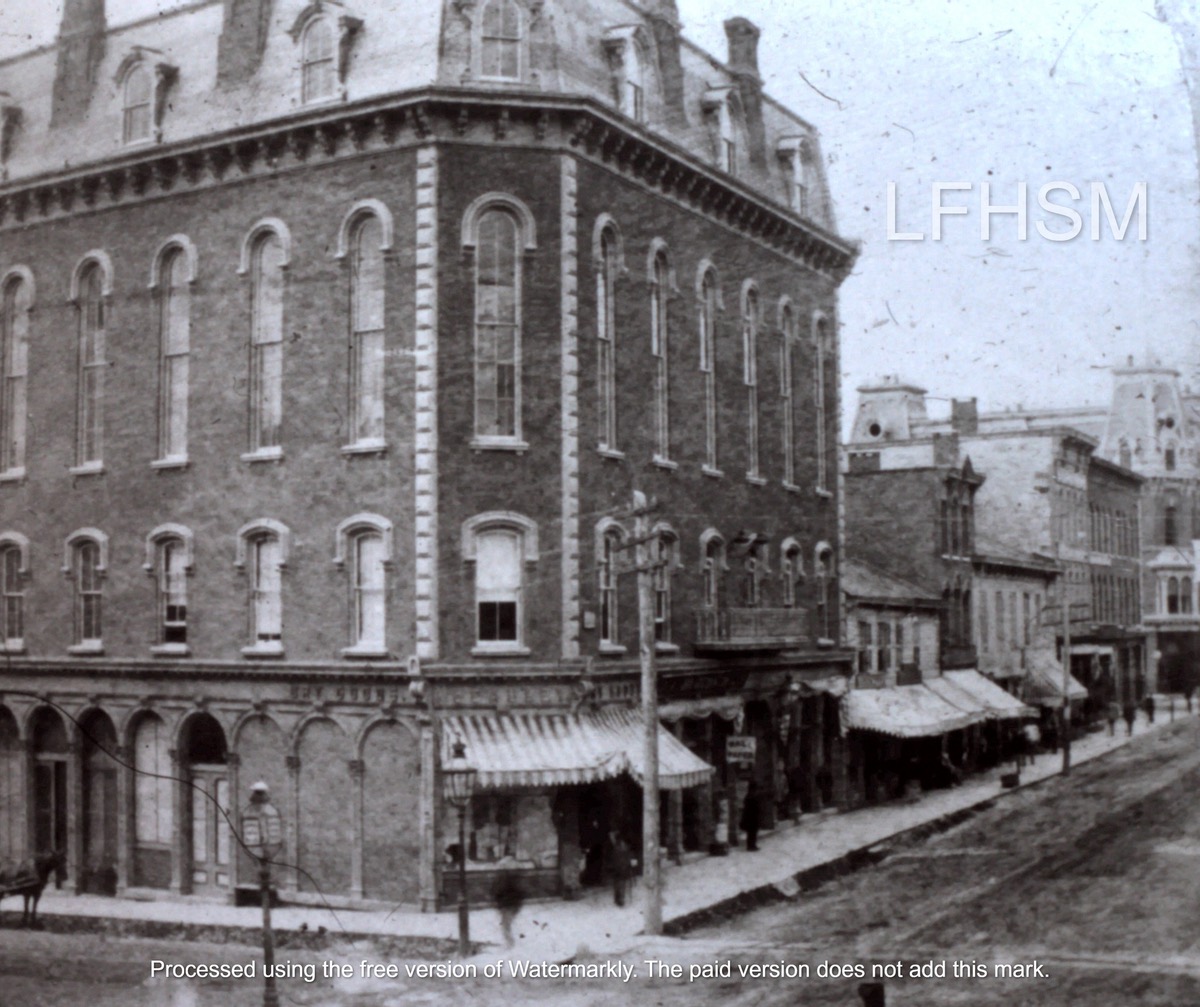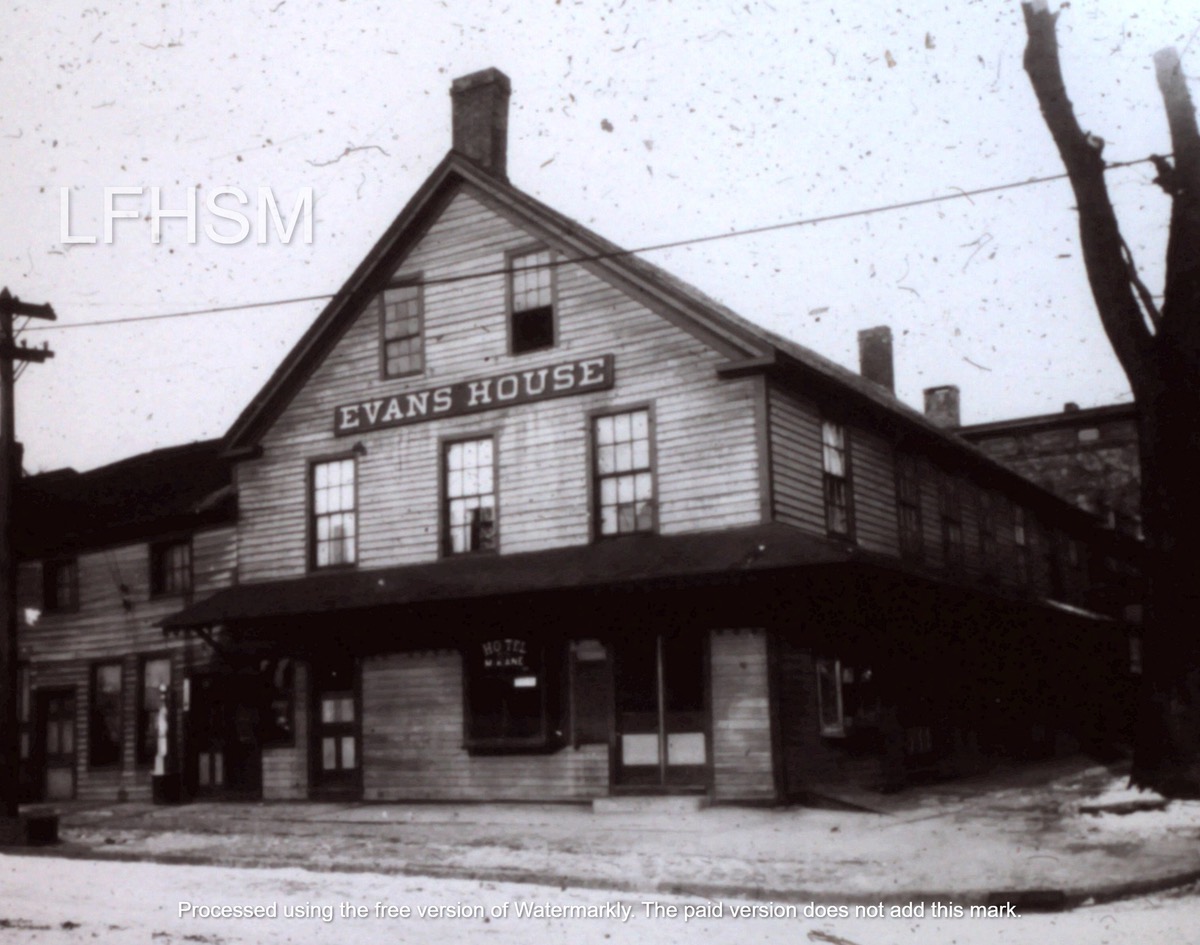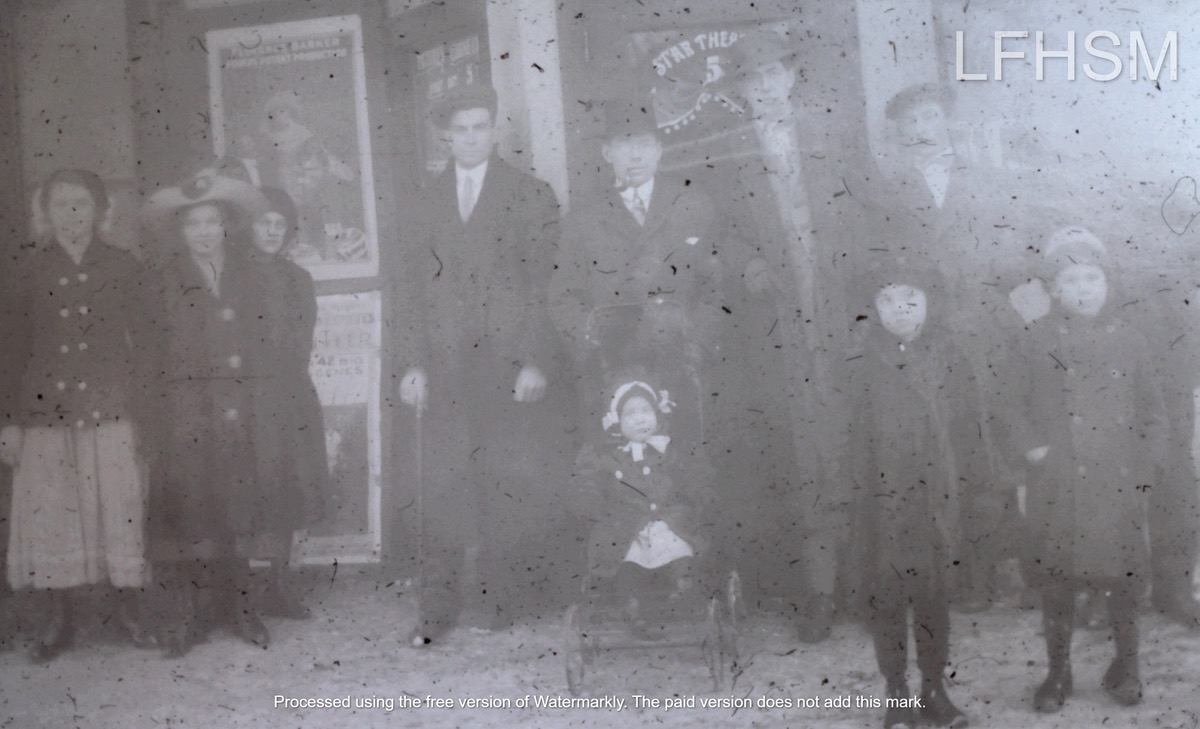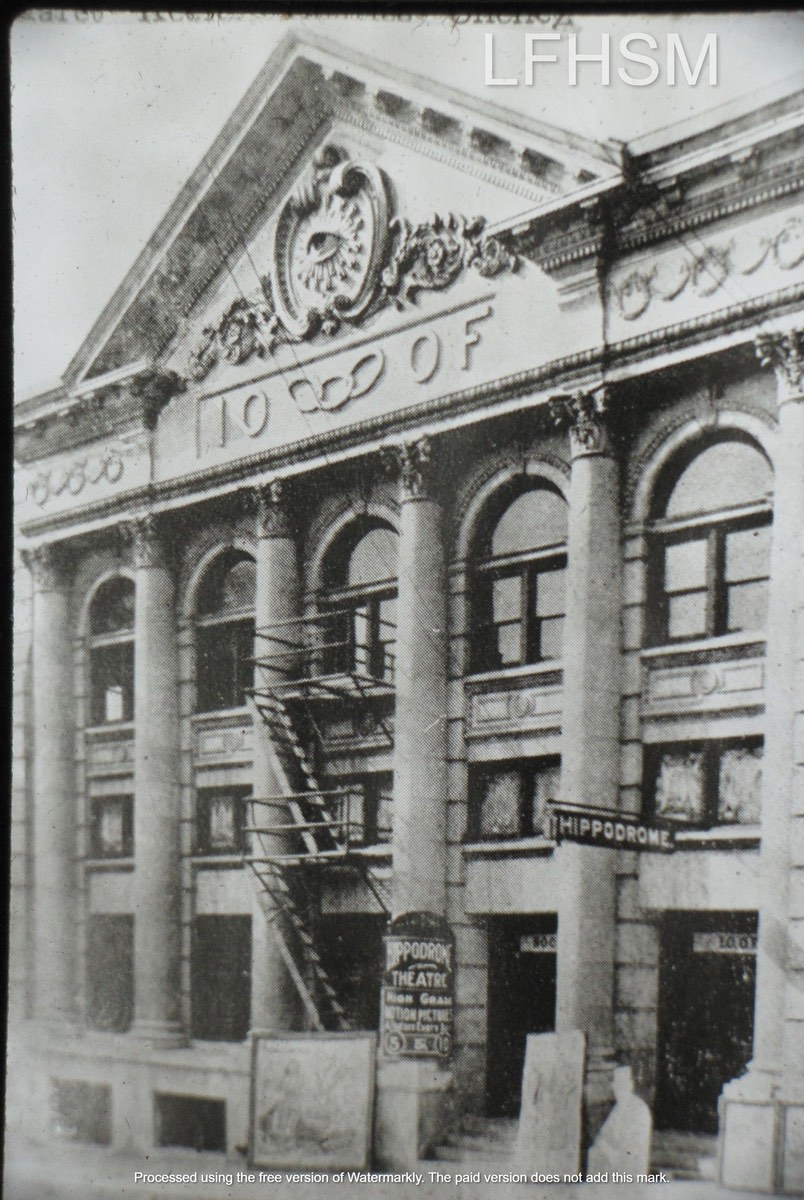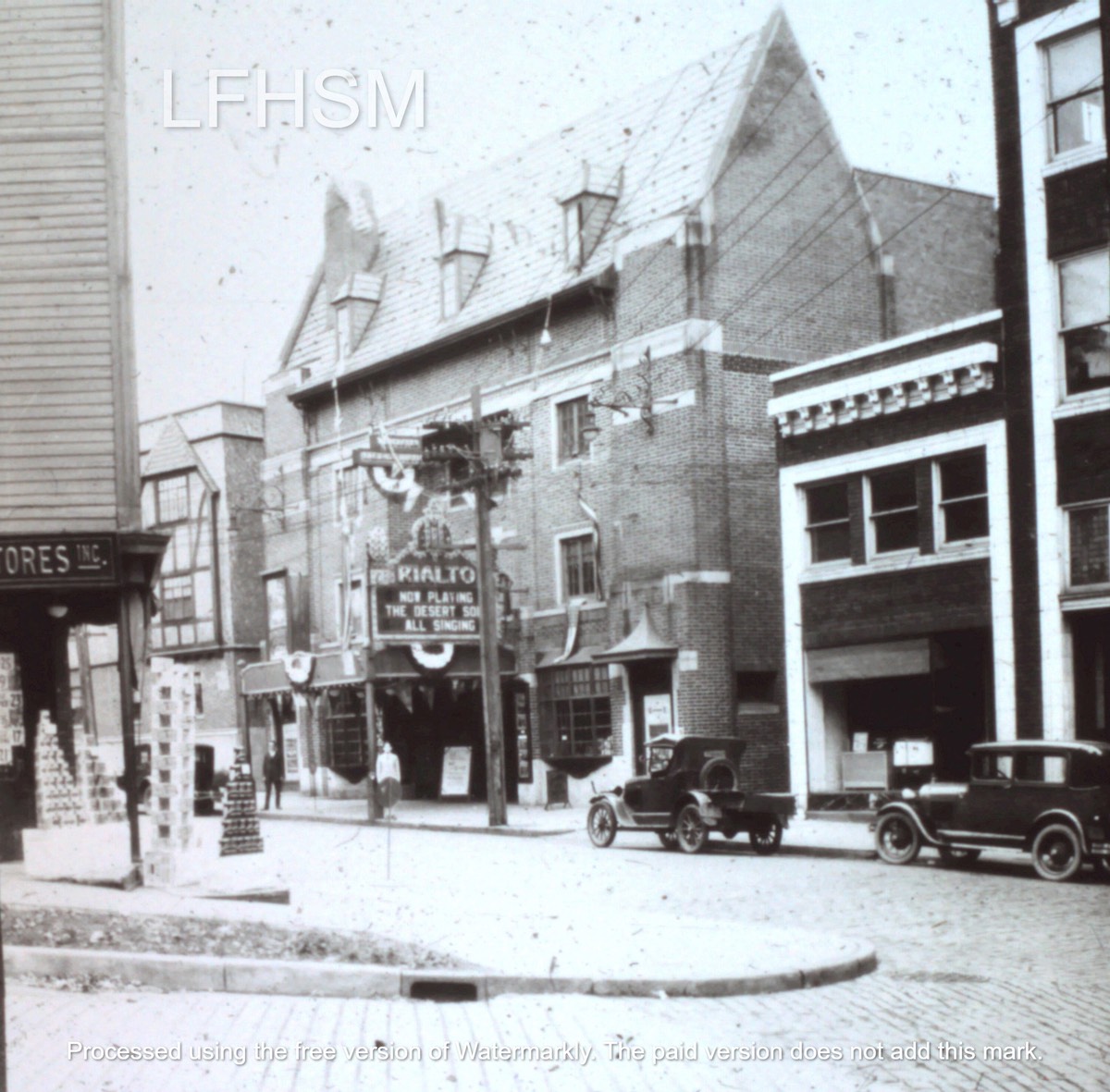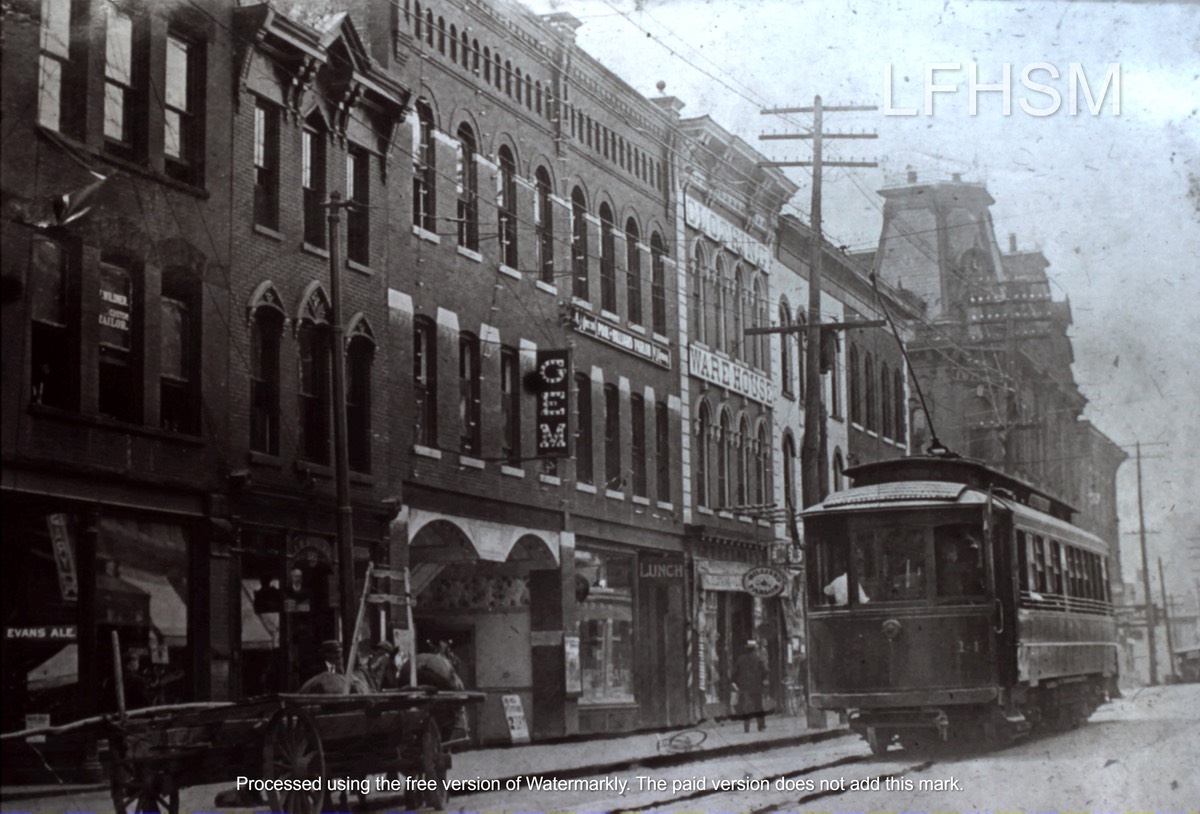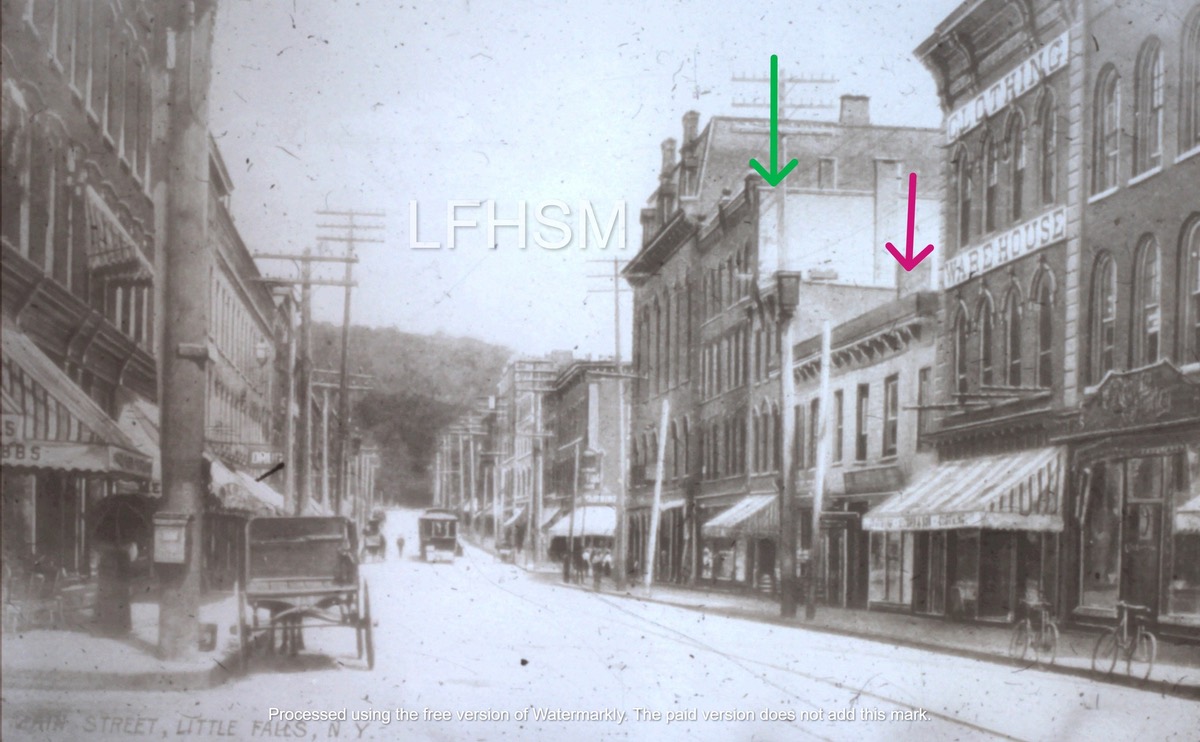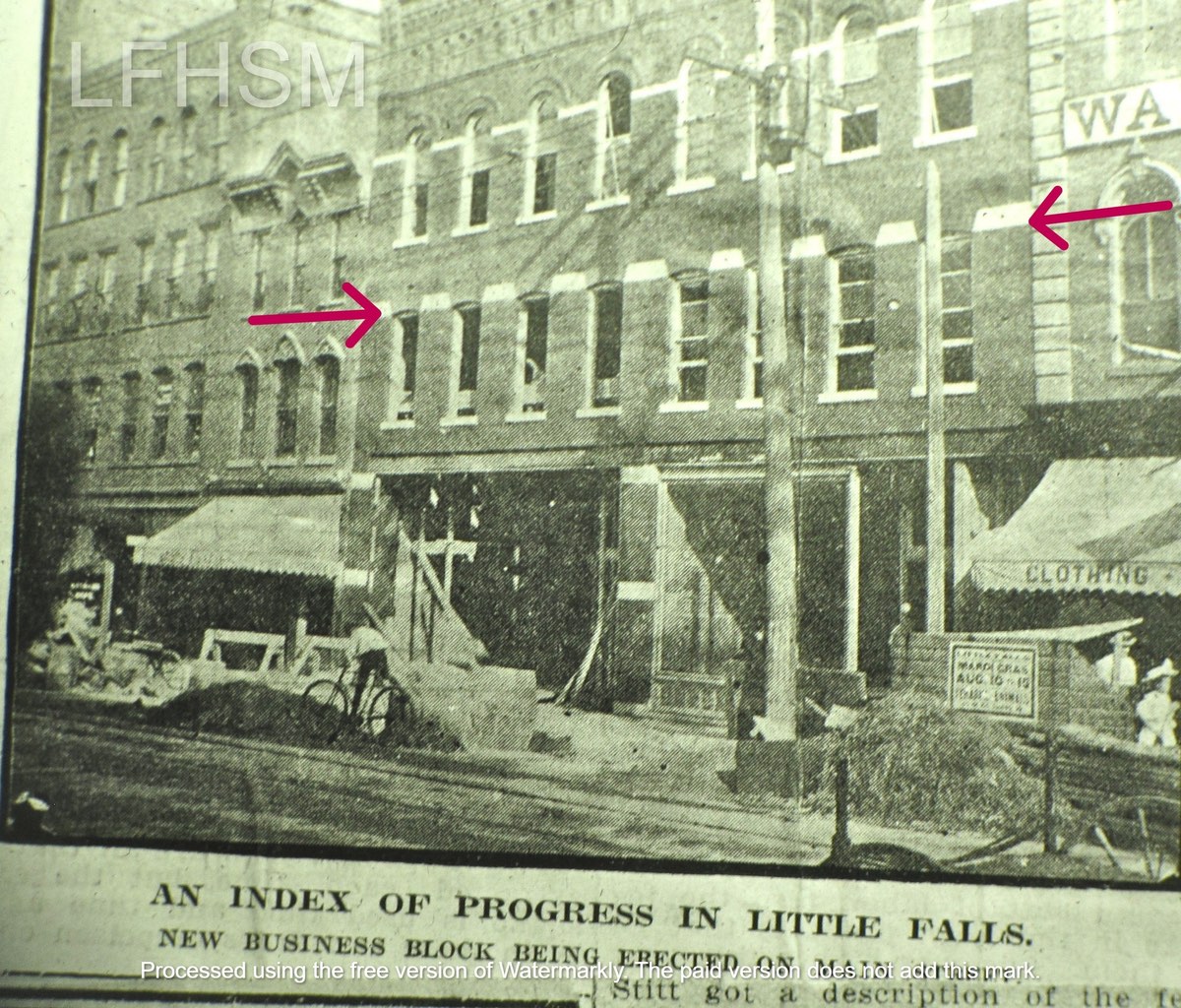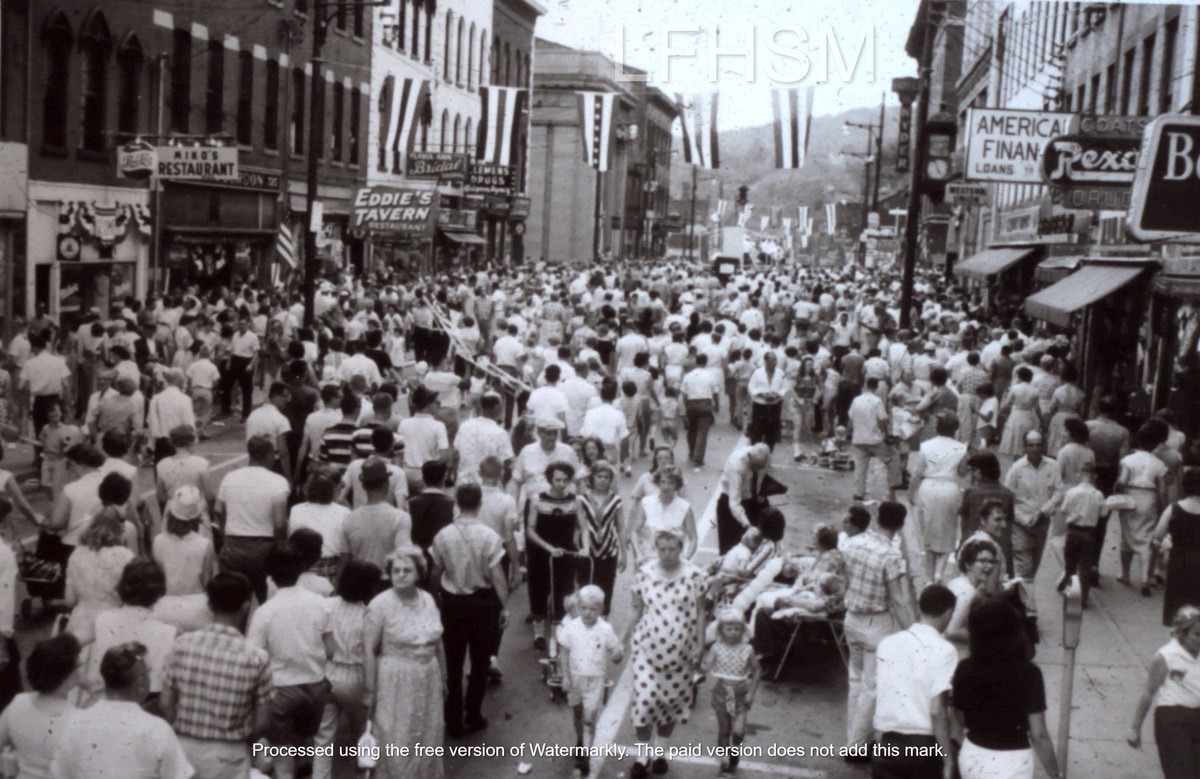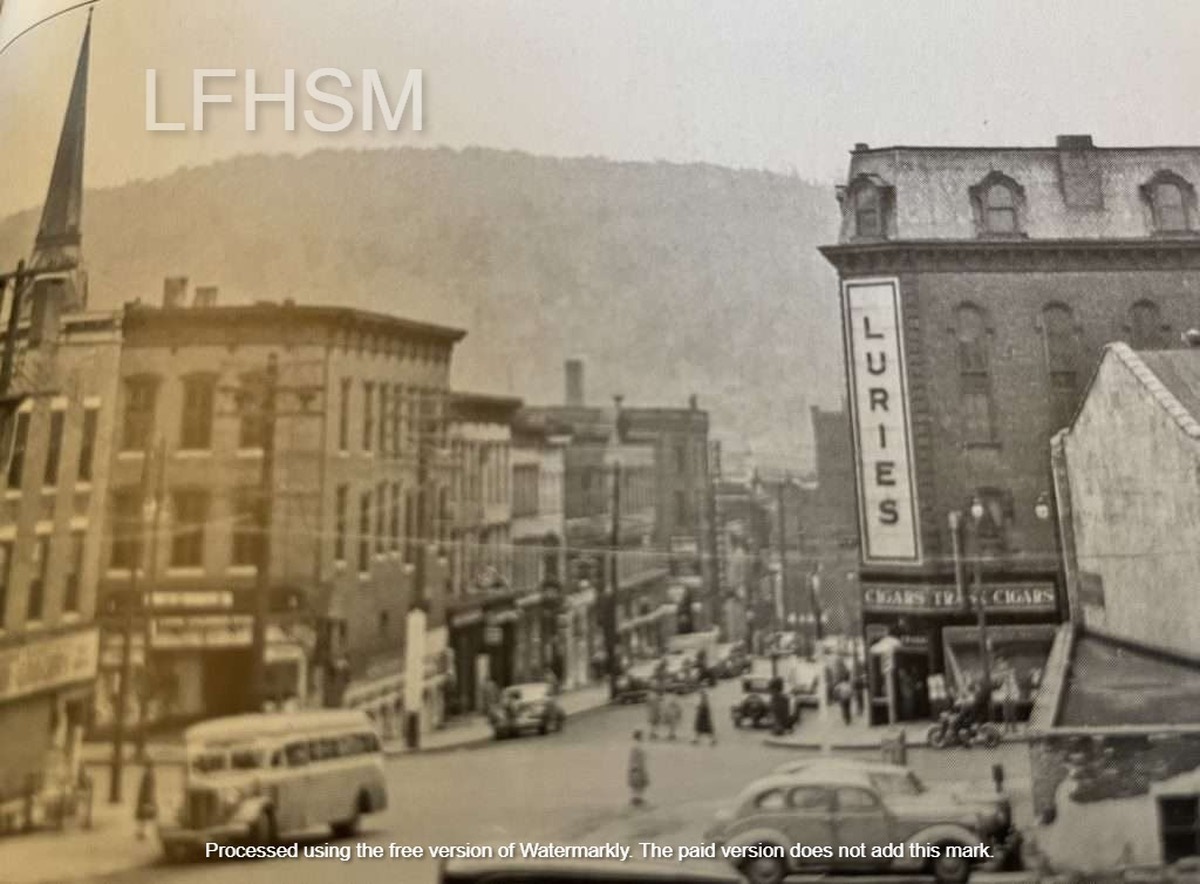On the 12th of July in 1812, Colonel Morgan, proprietor of the “Stag’s Head Tavern” (formerly Crane’s Tavern) entertained General Stephen Van Rensselaer and his officers on their way to the Canadian frontier. A sumptuous banquet was served followed by the usual toasts.”
July 12, 1812, Cooney Archives
THE GEM THEATER: WHICH EMANATED FROM CRANE’S TAVERN AND OTHER EARLY SILENT MOVIE HOUSES OF LITTLE FALLS
John Porteous, the founder of the reestablishment of Little Falls after the American Revolution, built the first structure at Sixth Street in Little Falls, being known as the old “Yellow House” in 1790, with it being used as a trading post, tavern, hotel, and post office, being in the present-day location of Kress Physical Therapy at 175 West Main Street.
According to the Cooney Archives: This Day In History …” On the 6th of February in 1808, William Alexander, son-in-law of John Porteous, and agent for the Ellice Estate, leased to himself the lot on the south side of Main Street extending to the Ann Street corner for the sum of three dollars a year. Crane’s Tavern was built on the site, the first free standing tavern in Little Falls. It became the leading gathering place in the early history of the village.”
William Alexander inherited the Yellow House upon the death of Porteous and all the property from Ann Street to Second Street, with him owning all the land lots along the south side of Catherine Street (East Main Street) from 1810-1842. Upon William’s death, the land was inherited by his son, Henry P. Alexander.
Crane’s Tavern
A man by the name of Crane was the first proprietor of the tavern, hence, the name for the tavern being Crane’s Tavern. During the early 1800s, Crane’s Tavern was one of the main stagecoach stops at Little Falls, with it being the center of life for the community where citizens went to obtain local news, since the weekly newspaper the “Peoples Friend” didn’t proceed into publication by Edward Griffin until 1821. Local citizens also frequented the tavern for socializing and entertainment.
It was at Crane’s Tavern, in 1811, that the first village government was formed. A meeting was held at the tavern on the 30th of March of that year, with the purpose to draw up an abstract for a charter for Little Falls. The abstract contained eighty-seven laws for the citizens of Little Falls to abide by, for a term of fifteen years and an annual election was to be held by a board of trustees on the first Tuesday of every May. Also at this meeting, a village seal was decided upon, with the design containing a scythe, a hoe, and a rake, which were set in the center of the emblem, representing Little Falls as an agricultural community. The New York State Legislature granted the Charter of 1811, incorporating Little Falls as village.
Many other organizations also held meetings at the tavern, with the rollcall for a meeting of the No.1 Fire Company, after a fire there on the 5th of May in 1811, tallied twenty-three volunteers present.
Stag’s Head Tavern
The lease was transferred in 1812 to Colonel Morgan, when the tavern became known as the Stag’s Head Tavern. The War of 1812 brought Military and supply wagons, along with travelers, through this area on the Mohawk Turnpike Road. During this period, many people traveling through Little Falls couldn’t read or write, so a wooden stag sign was hung above the entrance of the Stag’s Head Tavern, for it to be advertised as a tavern. General Stephan Van Rensselaer and his officers were entertained there, as they stopped for the night on their way to the Canadian frontier. General Myers of Herkimer, met them three miles east from the village on the Mohawk Turnpike Road and escorted them to the tavern where a delicious, nourishing meal was served. Several of the Officers wrote in their journals of the wonderful hospitality that had been bestowed upon them at the Stag’s Head Tavern.
In 1815, a meeting was held at the tavern by thirty local citizens, to incorporate the first library at Little Falls.
In 1816, there were only two thoroughfare streets in the village of Little Falls, Catherine Street, being the main avenue through Little Falls on the old Mohawk Turnpike Road, and Eastern Avenue. Eastern Avenue consisted of German Street, Ann Street and Church Street, all combined to form one street. The Stag’s Head Tavern stood on the south side of Catherine Street, with it being built on the site of the present-day side entry to the M&T Bank.
In 1820, Morgan transferred the lease to John McKinster (also known as Kenstry, Mckinstry, and McKenster), when it was then called the Little Falls Hotel. The upstairs ballroom was known as the Cotillion Hall, where many parties had been enjoyed.
In 1827, the tavern was temporarily leased by Henry Holmes, with it then being known as the Holmes Tavern. On the 8th of January, a Military Christmas Ball was held in the Holmes Cotillion Hall. With the date being the anniversary of General Andrew Jackson’s victory at the Battle of New Orleans, the gentlemen that attended the ball proudly wore their military uniforms.
By 1835, Mckinster was again the proprietor of the tavern.
In 1838, after the building of the c.1825 Erie Canal, there were five hostelries licensed in the village. The hostelries were: the Charles Hinchmen’s Hotel; the Nicolas Moyer’s Hotel; the J. Hotel; the Conrad Stephan’s Hotel; and the McKinster’s Tavern.
By 1839, the tavern was known as the Rockton Hotel and was operated by Frederick Couch. On the 6th and 7th of December an auction of water lots was held at the Rockton Hotel. The properties were mortgaged by the estate of Edward Ellice and the main purchasers were Richard Ray Ward and James Monroe.
According to the Cooney Archives: This Day In History …”On the 17th of July in 1839, at Couch’s Hall in the old McKinster House, Mr. and Mrs. Powell would present the tragedies “Doughs” on Monday’s, “The “Apostle” on Tuesday’s, and “Lady of the Lake” on Wednesday’s.”
In the early 1840s, the upper floors of the tavern were rebuilt and a large ballroom was installed. Apparently, the second floor wasn’t trussed soundly, as on the 15th of March in 1841, while a lecture was taking place, the floor began to sag under the weight of the attending audience, causing structural damage. The lecture was adjourned and the tavern was closed for repairs.
In April of 1842, Couch gave up his lease and went to Fink’s Basin to run Fink’s Hotel. The tavern was then known as the Alexander Hall.
By 1844, it was back to being called the McKinster Hotel. At that time, a Mr. Wilson was the proprietor and operated it as a house of temperance, where no alcohol was served. Perhaps, that is why the hotel was soon out of business.
In 1847, Judge Nathaniel S. Benton, whose historic circa 1827 village home is the present-day W.C.A., purchased the McKinster Hotel to prevent it from being in competition with his hotel and converted it into apartments and business space. Benton inherited the Britton Hotel in 1832 from his father-in-law, the tanner Eben Britton, which is the present-day site of the Synder Apartments.
According to F. Willard Hardin, in 1897, the old stone tavern building was a “99 Cent Variety Store” with Lafayette Brace, a local cabinet maker, being the proprietor. The barn behind McKinster’s Tavern was then used for stables. The alley was used as space for the restaurant known as the “Favorite Restaurant.”
In 1897, silent movie shows came to Little Falls, with the first “movie” being shown in a tent on Second Street, during the annual street fair. The first “theater style-silent movie picture show” was shown at the Sar Academy, which was in the present-day site of City Hall. Silent movie shows were also shown at the Skinner Opera House, which was at the present- day location of the southeast corner of the M&T Bank on East Main Street.
In 1905, John E. Reardon and Casper Shults became partners and formed a “movie house” at 44 West Main Street, in Little Falls. The 1960s Proverse Motor Sales business was the last business to occupy this site, with it presently being an empty lot.
In 1907, William Beaumont, the owner of a fish market on Second Street, opened a theater in the Rifle Corps gym, which was known as the Family Theater. The Family Theater was located on the upper floor of the Mc Cauley block, at 569 East Main Street, on the south side of East Main, across from the present-day shop of Little Falls Appliance center.
The old Crane’s Tavern was damaged by a major fire in 1907 and was razed in 1908. The Wilcox’s Stove & Tin Shop and Porter’s Tavern were that last businesses to occupy the tavern.
In 1908, Reardon and Shults moved their movie theater business to 519 East Main Street, being just east of the empty lot of the old Crane’s Tavern at 517 East Main Street. They had a new brick building constructed on the empty lot and combined the buildings of 519 and 517 East Main Street into one large building, with a single roof spanning over both structures that became known as the historic Gem Theater.
According to the Cooney Archives: This Day In History …” On the 18th of March in 1910, William Evans closed his moving picture and vaudeville house, known as the Royal Theater. With the rivalry of three such places and a 10 cents admission charge, the Royal could not produce the revenue to stay open.” The Evans House was located on the northwest corner of South Ann Street and John Street, being the present-day location of the Valley Cinemas. The New York State Dairymen’s Board of Trade was held at the Evans House during the mid-1800s, setting the price for cheese, therefore, being the catalyst for Little Falls to become known as the “Cheese Capital of the United States.”
According to the Cooney Archives: This Day In History …” In 1910, Winford Henry Linton operated the “Hippodrome Theatre” in the I.O.O.F. Hall on William Street. He also operated the “Lintonian” in the Skinner Opera House.”
The Gem Theater, which was the most successful movie house in Little Falls during the period of silent movies, had a seating capacity for an audience of four hundred and twenty-five. Reardon and Shultz expanded their business to include live vaudeville shows, and had outgrown this space. The partners expanded their movie house business into a building east of the Gem Theater, being two buildings away, known as the old c.1869 Skinner Opera House, which became known as the City Theater.
According to the Cooney Archives: This Day In History …” On the 1st of September in 1910, “The City Theatre” is the name which Reardon & Shults have decided that Skinner Opera House will be hereafter known.”
During WW I, an amusement tax was levied, causing the costs of tickets to rise to 22 cents. After the war, the amusement tax was repealed, and ticket costs went back to 20 cents for an adult and 10 cents for a child.
In 1916, Reardon and Shults purchased the Star Theater from Ed Hurley. At this time, the Star Theater was located at 516 East Jefferson Street, with the location eventually became known within the village as Becker’s Garage.
According to the Cooney Archives: This Day In History …” On the 7th of May in 1918, pickpockets, operating at the Hippodrome, Gem Theater, and other public gathering places, have met with much success in the city. Wallets, purses, and watches all have been lifted.”
According to the Cooney Archives: This Day In History … ‘On the 1st of July in 1920, Reardon and Shults made a home-talent movie for a “Family Theatre” show featuring local residents. The leading lady was Jeanette Horton who was employed by the Herkimer County Trust Company. A short-time resident, Mr. Lamke was the leading man, while Chief of Police Long was the heroine’s father. Many other local residents were in the film.” The title for the silent movie was “A Little Falls Romance.”
In 1920, John P. and Frances McGraw purchased the Gem Theater from Reardon and Shults. Frances McGraw was fond of stray animals, so the theater was often overrun with cats. Mrs.. McGraw became a widow in 1925 and sold the business to Louis and Julius Schine, of the Theater Circuit Dominion Operating Company, Ltd., from Gloversville, NY.
The Schine brothers’ also purchased the Little Falls Hippodrome, the City Theater, and the Gateway Theater. The Gateway Theater was built by a group of local businessmen, for $241,000. in 1922, who had purchased a lot on North Ann Street, which was where an early pioneer settler, Eben Britton, had long ago operated a tannery. The theater became known as the Rialto Theatre in 1925. After the sale of the Gem Theater, Frances McGraw opened a candy stand within the lobby of the Rialto Theater.
The first talking picture show in Little Falls, was shown at the Rialto on the 28th of February in 1929, which eliminated the use of music provided by the Little Falls Symphony and the Wurilitzer Theater Organ.
In the 1930s, Casper Reardon, the namesake of Casper Shults and the grandson of John E. Reardon, who were the first owners of the Gem Theater, was hailed as the “greatest harpist that ever lived” and he “amazed his audiences by playing jazz music on his harp”, which he performed on the stage of the Rialto Theater and in theaters across the states and abroad.
In 1935, the Schine brothers’ hired a manager for the Rialto, Nicholas Kaufman from Batavia, NY. In 1936, Kaufman married Frances McGraw’s daughter, Marie McGraw. Kaufman held the position of head manager for the Rialto Theater for thirty-seven years, with the theater closing in 1972, and was razed in 1997.
The Schine brothers’ had acquired ownership of over one-hundred and sixty theaters in the northeast over the course of their careers in the theater industry. The Shine’s sold their holdings in 1965 to property developers, Lawrence Wien and Harry B. Helmsley., with Helmsley also owning the Empire State Building during this period.
The parking lot and the drive-thru for the Adirondack Bank reside on the site of the old Rialto Theater.
After the passing of many years, the site of Crane’s Tavern was lastly known as Yourdon’s Men Shop & Porter’s Tavern, the Gateway Theater was lastly known as Chickering’s Restaurant, and the old City Theater was lastly known as the department store of M. Lurie & Co. The buildings were all removed by Urban Renewal in the early 1970s, being replaced by the structure of the Herkimer County Trust Bank, presently known as the M&T Bank.
*Digitizing of Historical Photos by Gail & Mike Potter, FROM THE COONEY ARCHIVES: THIS DAY IN HISTORY by Louis Baum, JR, Article written by Darlene Smith
The Rialto Theater : Stop # 32 on the “Historic Homes and Places, Little Falls, NY Walking Tour : Please plan a walking tour of our city: Preserve Our Past (POP) has a walking tour for the east side of the village, which their tour book “Architectural Tour East” can be purchased from a POP Member or at the LFHS Museum for $8. The Little Falls Historical Society Museum has a walking tour of the west side of the village, “Historic Homes & Places in Little Falls, NY” (this tour can also be enjoyed virtually at the above link) Have a wonderful walk-about
Please plan a visit to the Little Falls Historical Society Museum to view the “Urban Renewal Exhibit.” If you can’t make it into the museum, the virtual “Urban Renewal Exhibit.”
The Little Falls Historical Society Museum is open for the 2023 SEASON, with FREE TOURS on Mondays, Wednesdays, and Fridays from 1pm-4pm. The museum will also be open on alternating Saturdays, from 9AM-Noon (started June 3rd). We are still accepting “Appointments for After Hours” for an appointment, please contact Louis Baum at 315-867-3527. We hope to see you soon!
Would you like to become a member of the Little Falls Historical Society Museum? Please learn more here.

